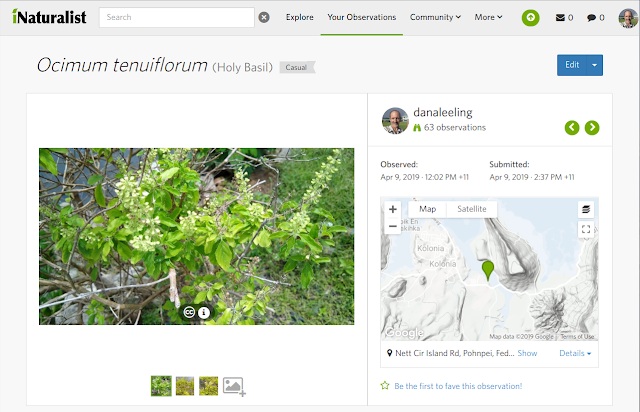Ethnobotanical Use observation field in iNaturalist

iNaturalist has a mission of connecting people to wild nature in a social spirit of citizen science. The platform produces data of use to researchers in a variety of fields, but the primary intent is to encourage people to get outside and experience wild nature. Ocimum tenuiflorum in iNaturalist While the core functionality of the platform centers on making and identifying organisms, the observations support additional fields including Ethnobotanical Use, Common Name in Local Language, and Local language used for common name. These optional fields provide support for including ethnobotanical information in an observation. Observation fields on Ocimum tenuiflorum observation Observation fields can only be created and edited from the web interface, not from the smartphone apps. My own workflow is to upload images taken with my smartphone via the app and then edit the images on the desktop interface later, adding plant phenology notations, establishmentMeans, and, ...



